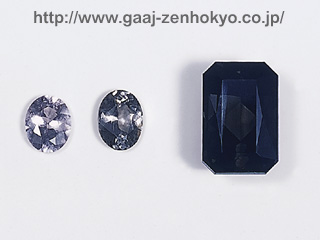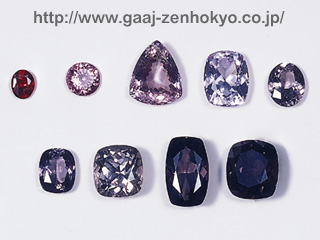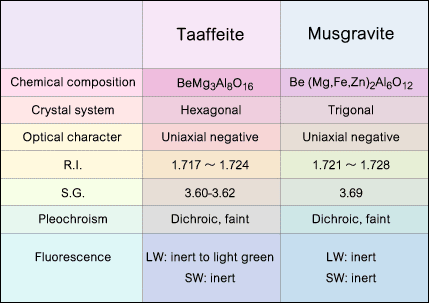|
||||||||||||||||
|
The latest topics at the GAAJ laboratory are introduced. This report is based on an oral presentation at the general lecture in the annual meeting of the Gemmological Society of Japan 2006, which was partly added and amended.
Introduction Taaffeite and musgravite are rare gemstones that are popular among collectors, and they are both transparent, commonly with purplish hue or rarely with slightly reddish or blueish tint (photo 1a, b). These two gems, belonging to the same mineral group MAGNESIO TAAFFEITE, have very similar chemical composition and their properties such as RI or SG are overlapped, so that they cannot be distinguished from each other generally with standard identification tests (figure 1). Our study this time proved that semi-quantitative analysis using energy dispersive X-ray fluorescency (EDXRF) and Raman spectral analysis are effective to distinguish these two materials. The detail of our study is reported here.
Background Gem-quality musgravite poses a great rarity, and only eight pieces in total have been reported in gem-related documents (Schmetzer et al, 2000; 2005 a, b; Kiefert and Schmetzer, 1998) since the first appearance in 1993, and no single piece has been so far identified in Japan, to the authorfs knowledge. Although X-ray diffraction analysis was the only identifying method at the time of musgravitefs discovery, the powder diffraction method is a destructive test that is not an ideal way in gem identification. An effectivity of Raman spectral analysis in identification of taaffeite and musgravite was reported in 1998. As it has an advantage of non-destructiveness, this method should be highly effective in distinguishing the two materials, though, the samples supplied for testing were only in a small number and of non-gem quality, so that further examination was required. |
||||||||||||||||
|
||||||||||||||||



